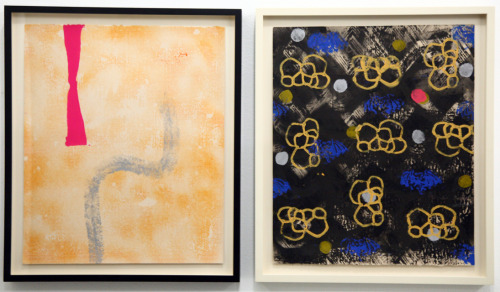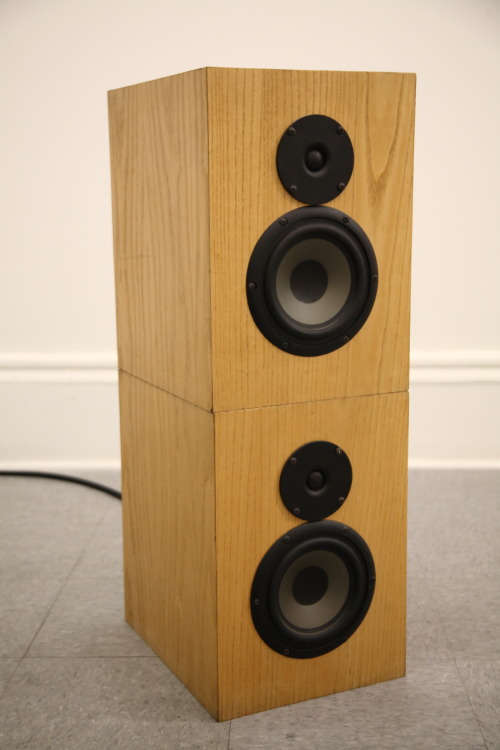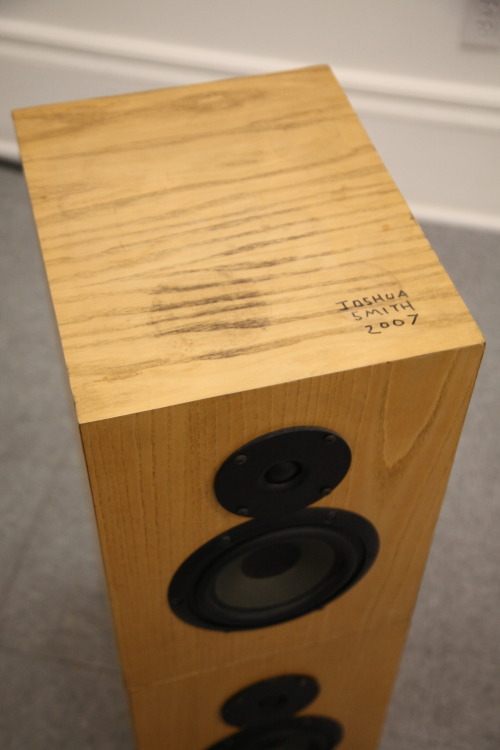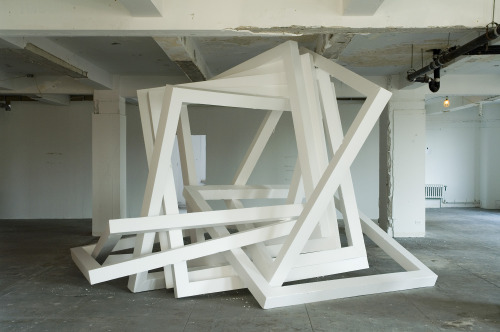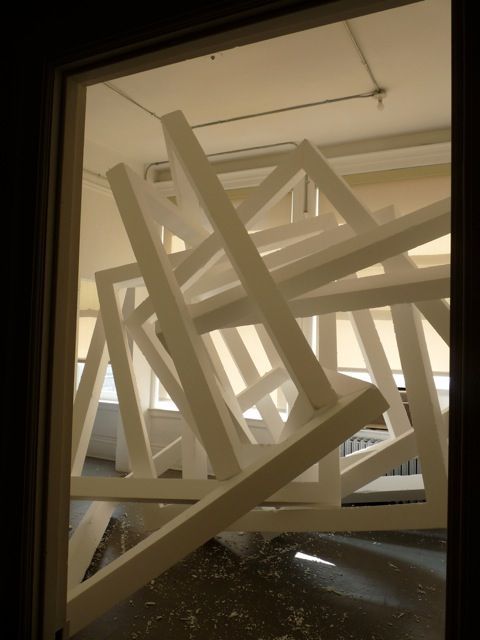Devon Dikeou “Mid-Career Smear” and Reclaiming the Ordinary
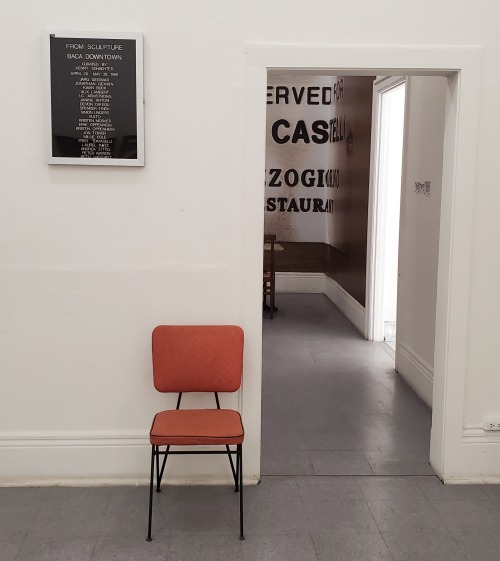
Devon Dikeou, “’What’s Love Got To Do With It’: From Sculpture,” 1991 ongoing; (detail) “Reserved for Leo Castelli: Since Cezanne (After Clive Bell),” 2012 ongoing
“In-betweeness” is a central theme to Devon Dikeou’s art practice, which she describes as the spaces and materials that set the stage for important events and human interaction. She takes a specific element of that space, like a sign board from a gallery lobby or a napkin from a cocktail party and magnifies its role in what transpired within its proximity. She often goes further to recreate the space itself, be it a Parisian café or a bedroom in The White House. This conceptual model lends itself to art that materializes as everyday objects and installations, but there is more to it than that. What makes Dikeou a master of this model is that she is not merely repurposing the ordinary but rather reclaiming and elevating it as something significant, worthy, and precious. We now exist in a time when people crave nothing but normalcy, and Dikeou’s works exhibited in her retrospective exhibition “Mid-Career Smear” at The Dikeou Collection satisfies that craving for the everyday.
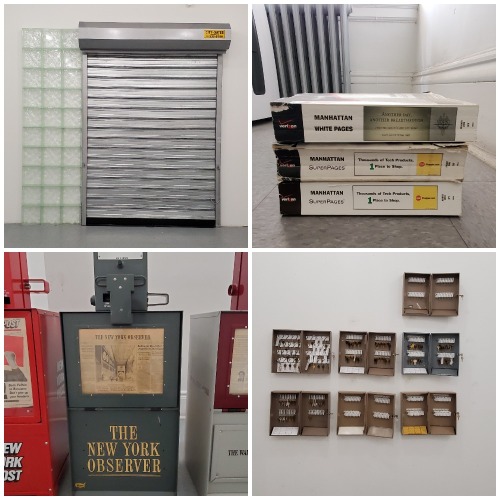
Devon Dikeou, “Security/Secure,” 1989; (detail) “Do I Know You?,” 1991 ongoing; (detail) “The News,” 1991 ongoing; (detail) Security Ke-Master, 1991 ongoing
After an extended closure due to Covid-19, The Dikeou Collection officially reopened to the public in March 2021. Seeing new and familiar faces walk through the doors has been a refreshing reminder how important real-life art experiences are for everyone in the creative ecosystem, especially when that experience mimics “real life.” Security/Secure, The News, Do I Know You, Security Ke-Master… these are all objects one would see throughout the day, but in 2020 and 2021 thus far, they are now novel and dare I say, exciting. A man with his family visited recently, and while in the office (complete with an employee time clock and cards) he commented how he felt like he was at work, a place he had not been in close to a year. And the crazy part is that he actually seemed happy and energized by that realization.
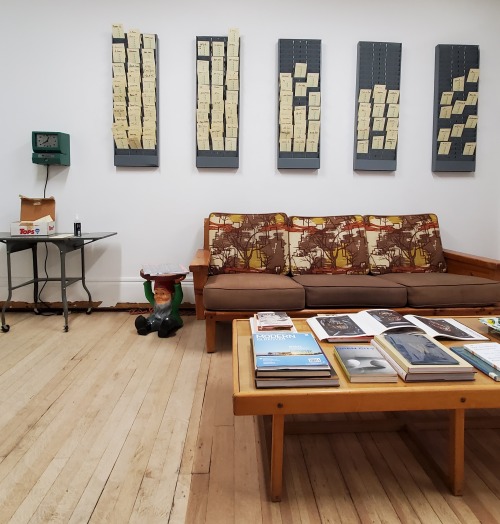
Devon Dikeou, “’Takes A Licking, And Keeps On Ticking’—Timex Ad Campaign,” 1991 ongoing
Only in these strange Covid-times would someone revel in the fact that an art exhibition makes them feel like they are at their job. There is an inherent understanding that art experiences are special and meant to be appreciated because we carve time out of our busy schedules to have them. We seek opportunities to momentarily escape our normal lives and try to see the world through a fresh creative lens. Now that the world’s scope of normal is upended, we long to go back to the days of seeing businesses open their big front gates in the morning and grabbing a sandwich from the deli before heading into work or school. Devon Dikeou and The Dikeou Collection invite you to return to that world, just as you left it.
-Hayley Richardson

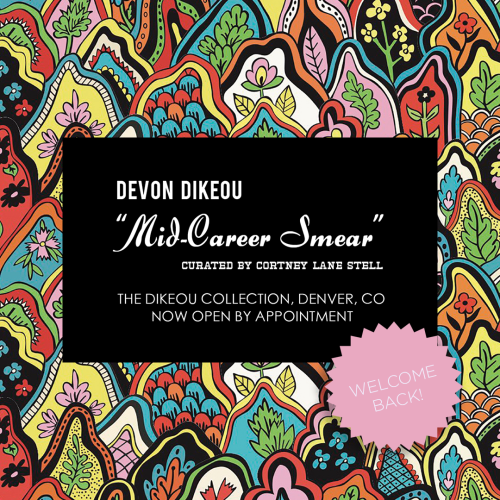
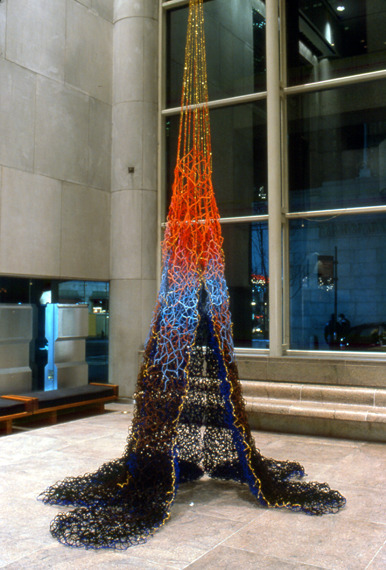
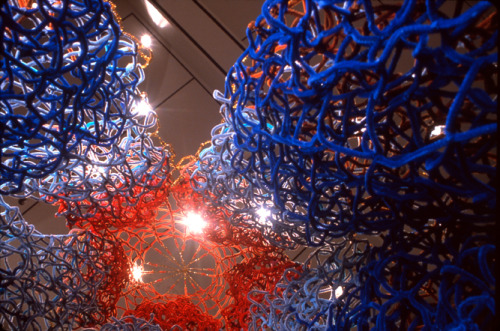 DeBellevue, Lucky 2002
DeBellevue, Lucky 2002